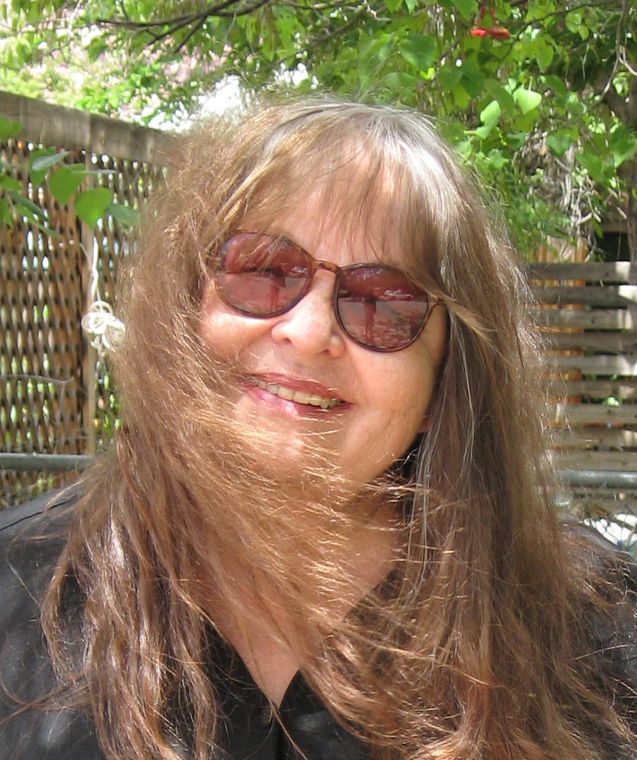I was sitting around with some friends the other night talking about the good old days.
If you are an old-time Moabylonian, your idea of the good old days is probably before the 1950s when uranium mining changed the town from ranching and agriculture to mineral extraction boom and bust. For some, the boom-and-bust times were the good old days. For us, the good old days in Moab were from the late 70s to the mid 90s, before Moab became a hub of industrial tourism.
Some of us worked “real” jobs, many were the boaters and servers that still populate our town. The difference was that seasonal workers were locals, and we remained in town over the winter. We found places to live and were involved with the politics and protests that keep a town humming along. Live music and other entertainments were scarce, so we made our own fun. The Ladies’ Hat Party was an occasion for dressing up and being served beverages by luscious boatmen wearing the minimum clothing required by law.
There was the 4:01 Club, a drinking club that met every Friday at the Poplar Place.
Moab has always had its share of watering holes. In our day, it was the Poplar Place (now Twisted Sistas), where the hippies hung out, or Woody’s, which catered to the miners. There wasn’t much cross-pollination between the two, except for Ed Abbey, who seldom turned down an opportunity for a brew. One liquid night at the Poplar Place engendered Ed’s only play, “Best of the West,” which he gave to Moab Community Theatre, saying he never wanted anything to do with it, ever again.
Moab Community Theatre put on three plays each year. The Fat Tire Festival ended each season with a costume party that has seldom been equaled for sheer extravagance. We had an annual County Fair. KZMU was a baby station, begun on a shoestring by a few people who thought the town needed a voice. The Green River – Moab Friendship Cruise drew our divisive little towns together.
Three alternative newspapers published on semi-regular schedules. Tradewinds offered the lighter side of news. The Stinking Desert Gazette gave a dyspeptic view of the many oddities of Moab. The Renegade did the same with a slightly more political stance.
Politics were less antagonistic, and a lot more fun. City council meetings became free-for-alls, and to voice our dismay, we made up bumper stickers that read: Moab City Council – The Best Show in Town. The sentiment was not meant to be complimentary, but legendary Mayor Tom Stocks loved them and bought a hundred which he handed out with much enjoyment. Tom was outrageous, but he loved being mayor, and would probably still be mayor if he hadn’t messed with our trash collection. We ended up laughing as much as we argued.
Moab doesn’t seem as cohesive these days. Seasonals really are seasonal. Most workers are scrambling to make any kind of living, and living cheek-to-jowl in the few affordable places. Their involvement with the town stretches for the season and then they are gone. I’m not the first person to say that our town is being loved to death by people who don’t live here.
A lot of the blame for that has three foci: Rim Cyclery, B.J. Eardley and yours truly. The Groff family were the prime instigators of the biking industry here. Ms. Eardley was a highly effective travel council director who knew how to get the word out, nationally and internationally. I organized The World’s Most Beautiful Dump Contest, which brought Charles Kuralt to town and gave us an estimated $8 million in free TV advertising. We may have to pay a karmic price for that.
I’ve heard Moab called “the new Sedona.” If that means that we are now officially a tourist trap with an overused infrastructure, second homes bought by people who live here a couple of weeks of the year, labor shortages, a frayed social structure, and friction between “us” and “them,” then I guess we have become Sedona-ized.
It’s not what we wanted, but it’s what we deserve for the lack of planning and direction. Some things don’t change much: In our good old days, we were talking about needing a new sewage treatment plant, moving the pile, needing affordable housing, needing year-round jobs and industry, needing a general plan that preserved our community’s identity.
In about 25 years, today will be the good old days. Will people look back on the Trashion Show, Puttin’ on the Ritz, the Gay Pride Parade and the Farmers Market in a nostalgic haze? Or will we be a town of nothing but motels and fast-food joints with no civic identity left?
It’s our choice. The good old days are what you make them.
Michaelene Pendleton is a retired mental health therapist who has lived in Moab on and off since 1954, and has seen the town through boom and bust.



